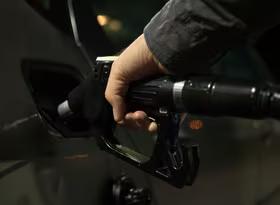
The cost of fixing the Clean Car Discount deficit is higher emissions
Between April and December last year, Clean Car Discount fees totalled $105m and rebates totalled $203m, which means the scheme distributed nearly double the revenue it brought in. The Discount scheme was designed to be self-funding, so the gap between fees and rebates needs to be addressed. To close the funding gap, the most straightforward approach would be to either lower the level of rebates, increase the level of fees, or a combination of the two.
However, a consequence of this rebalancing will be a lower incentive to purchase a hybrid or electric car, which will slow hybrid and electric car registrations, limiting reductions in car fleet emissions – the main reason for the Discount scheme’s introduction, as fleet emissions make up a large and fast-growing segment of New Zealand’s overall carbon emissions.
Clean Car Discount substantially grows the share of hybrid and electric car registrations
The introduction of the Clean Car Discount on 1 April 2022 had a substantial effect on registrations of hybrid and electric vehicles. In the 12 months to March 2023, there were 91,526 first-time registrations of hybrid and electric cars in New Zealand – this was a 66% increase on registrations in the previous year.
Along with growing strongly in their own right, registrations of hybrid and electric cars have represented an increasingly larger proportion of total first-time car registrations since the end of 2018 (see Chart 1). However, the pace of this trend has increased in the last 12 months with hybrid and electric cars comprising over 44% of total car registrations in the year ended March 2023.
In the March 2023 year, non-plug-in hybrid vehicles comprised nearly 30% of total first-time car registrations, with full electric cars representing just over 10%. Plug-in hybrid cars made up an additional 4.7% of total first-time car registrations.
To date, the Discount scheme has had a minor effect on the make up of the car fleet
Although more than four out of every ten cars newly registered in the March 2023 year were hybrid- or electric-powered, hybrid and electric cars still comprised only 7.0% of the total car fleet as of 31 March 2023. Cars powered solely by an internal combustion engine (ICE), which runs on petrol or diesel, represented 93% of the car fleet (see Chart 2).
Chart 2 highlights that ICE-powered cars still make up a large majority of the cars on New Zealand roads, but hybrid and electric cars are gaining ground. When compared with the car fleet as it was in March 2022, the share of hybrid and electric cars is 2.4 percentage points higher in March 2023 (and the share of ICE-powered cars fell by 2.4 percentage points). Compared to March 2022, in March 2023 there were 66,232 fewer ICE-powered cars on the roads and 87,796 more hybrid and electric cars.
Fixing the Clean Car Discount funding deficit will reduce uptake of lower-emissions cars
The introduction of the Clean Car Discount scheme has been a huge success at bringing forward the uptake of hybrid and electric cars in New Zealand, even though in its current form the policy is not as self-funded as the Government had hoped.
The Discount scheme was never intended to be permanent. As hybrid and electric car technology continues to improve and production costs fall relative to ICE-powered cars, government subsidies to purchase hybrid and electric cars will become unnecessary.
However, lowering the incentives to purchase hybrid and electric cars by rebalancing the Discount scheme after only 12 months will likely have a cooling effect on hybrid and electric car registrations – particularly while these cars are still much more expensive than their ICE-powered counterparts.
The recent re-prioritisation of government programmes has resulted in the Clean Car Upgrade, a cash-for-clunkers scrappage scheme, being discarded. Scrapping the Clean Car Upgrade scheme means some ICE-powered cars will stay on New Zealand roads for longer than they would have done if the Upgrade scheme was introduced. The Clean Car Upgrade would have supported hybrid and electric car registrations by incentivising the earlier de-registration of ICE-powered cars, which would conversely encourage earlier registration of hybrid and electric cars. This may be particularly relevant in New Zealand, as older cars tend to stick around in the fleet for much longer than they would in similar countries overseas.
The move to extend the reduction on fuel taxes could have a similar, though less direct, effect on the registration of hybrid and electric cars, as ICE-powered cars remain relatively more affordable (compared to hybrid- or electric-powered cars) when fuel prices are lower. By artificially depressing the price of fuel through reducing the fuel excise duty, the Government is arguably slowing the uptake of hybrid and electric cars.
Deciding whether or not to fill the fiscal hole left by the Clean Car Discount presents the Government with an issue they are grappling with in several areas, which is whether to prioritise policies that combat the here-and-now cost-of-living crisis or prioritise policies that fight climate change and support emissions reduction.
So far, the Government’s re-prioritisation suggests they are opting to prioritise policies which support households struggling in the cost-of-living crisis. If the Government stays true to form, the fiscal hole in the Clean Car Discount will be filled, likely with the unintended consequence of lowering incentives to purchase hybrid and electric cars.



















